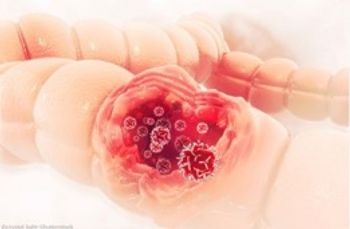
Primary Site Teratoma May Result in Residual Disease Teratoma Post-Chemo
The presence of teratoma in pretreatment non-seminomatous germ-cell tumors correlates with a higher risk of teratomatous elements in residual non- retroperitoneal disease following chemotherapy.
For patients with advanced non-seminomatous germ-cell tumors (NSGCT), the presence of teratoma in the primary tumor site appeared to correlate with a higher likelihood of teratoma in residual, non-retroperitoneal disease following chemotherapy, according to findings from a retrospective review published in the Journal of Clinical Oncology.
Among patients with a teratoma in the primary tumor site, 55% (n = 41/75) had at least 1 post-chemotherapy surgical with teratomatous elements compared with 17% (n = 9/54) among those without a teratoma in the primary tumor (P <.001). Additionally, among those without a primary site teratoma, investigators observed at least 1 post-chemotherapy non-retroperitoneal surgical specimen with active germ-cell tumors in 56% compared with 31% in those with a teratoma in the primary (P = .0046).
“Substantial advancements in both systemic treatment and surgical resection of residual disease in [germ cell tumors] have led to one of the highest cure rates in solid tumor oncology,” the authors wrote. “Given these advancements, emphasis is now placed on minimizing treatment burden when able."
The retrospective review included 129 patients with metastatic NSGCT who received treatment at Indiana University between 1990 and 2021, completed first-line or salvage chemotherapy, and had residual non-retroperitoneal disease in the absence of residual retroperitoneal disease.
The median age of the assessed population at diagnosis was 29 years (range, 16-52). The primary tumor site was testicular in all but a single patient whose primary site was the retroperitoneum. The median overall preoperative alpha fetoprotein level was 67 ng/mL (range, 0.9-467,000) and the median human chorionic gonadotropin level was 710 mIU/mL (range, 0.5-500,000).
All patients received platinum-based chemotherapy; most received either bleomycin plus etoposide and cisplatin for 3 cycles, bleomycin plus etoposide and cisplatin for 4 cycles, etoposide plus cisplatin for 4 cycles, or etoposide plus ifosfamide and cisplatin for 4 cycles.
Twenty patients underwent surgical resection following salvage chemotherapy and 5 underwent resection following frontline chemotherapy, then again after salvage chemotherapy; remaining patients underwent resection of residual non-retroperitoneal disease following frontline chemotherapy.
Additionally, 20 patients had resection of residual disease of the brain, including 3 patients who had necrosis, 17 who had active GCT, and 3 who had both active GCT and teratoma on pathology.
Among the 11 patients without teratoma in the primary who had a brain resection, 10 had a primary orchiectomy pathology that was predominantly embryonal carcinoma. The remaining patient had a primary orchiectomy specimen that was predominantly choriocarcinoma and partly embryonal carcinoma.
Of 9 patients with teratoma in the primary who had a brain resection, the primary orchiectomy specimen was predominantly embryonal carcinoma for 4 patients and mixed embryonal carcinoma, yolk sac, and choriocarcinoma for 5 patients.
“When active [germ cell tumor] is found at the time of residual non-retroperitoneal resection, we advocate for an individualized management approach,” the authors wrote. “…Moving forward, the development of biomarkers, such as microRNAs or circulating tumor DNA, may help to delineate patients who need to undergo surgical resection for post-chemotherapy non-retroperitoneal residual disease vs those who can be safely followed with surveillance.”
Reference
King JM, Cheng M, Kesler K, et al. Management of residual nonretroperitoneal disease in postchemotherapy nonseminomatous germ-cell tumors. J Clin Oncol. Published online February 9, 2023. doi:10.1200/JCO.22.02205
Newsletter
Stay up to date on recent advances in the multidisciplinary approach to cancer.































































































